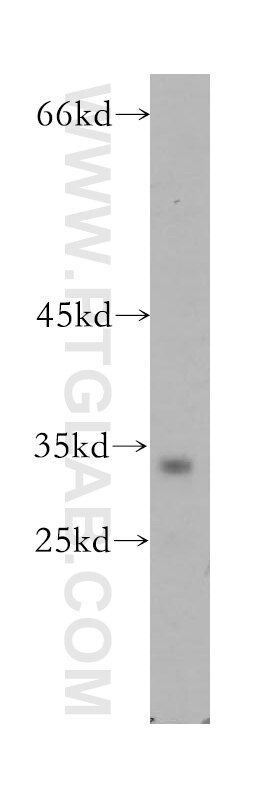TRAIL Polyklonaler Antikörper
TRAIL Polyklonal Antikörper für WB, ELISA
Wirt / Isotyp
Kaninchen / IgG
Getestete Reaktivität
human
Anwendung
WB, ELISA
Konjugation
Unkonjugiert
Kat-Nr. : 10399-1-AP
Synonyme
Galerie der Validierungsdaten
Geprüfte Anwendungen
| Erfolgreiche Detektion in WB | K-562-Zellen |
Empfohlene Verdünnung
| Anwendung | Verdünnung |
|---|---|
| Western Blot (WB) | WB : 1:300-1:600 |
| It is recommended that this reagent should be titrated in each testing system to obtain optimal results. | |
| Sample-dependent, check data in validation data gallery | |
Veröffentlichte Anwendungen
| WB | See 1 publications below |
Produktinformation
10399-1-AP bindet in WB, ELISA TRAIL und zeigt Reaktivität mit human
| Getestete Reaktivität | human |
| In Publikationen genannte Reaktivität | human |
| Wirt / Isotyp | Kaninchen / IgG |
| Klonalität | Polyklonal |
| Typ | Antikörper |
| Immunogen | TRAIL fusion protein Ag0627 |
| Vollständiger Name | tumor necrosis factor (ligand) superfamily, member 10 |
| Berechnetes Molekulargewicht | 281 aa, 33 kDa |
| GenBank-Zugangsnummer | BC032722 |
| Gene symbol | TRAIL |
| Gene ID (NCBI) | 8743 |
| Konjugation | Unkonjugiert |
| Form | Liquid |
| Reinigungsmethode | Antigen-Affinitätsreinigung |
| Lagerungspuffer | PBS mit 0.02% Natriumazid und 50% Glycerin pH 7.3. |
| Lagerungsbedingungen | Bei -20°C lagern. Nach dem Versand ein Jahr lang stabil Aliquotieren ist bei -20oC Lagerung nicht notwendig. 20ul Größen enthalten 0,1% BSA. |
Hintergrundinformationen
TRAIL is a 30 kD protein known as TNF-related apoptosis inducing ligand, CD253, TNFSF10, or Apo-2L. It is expressed as two kinds of forms: cell surface protein (30 kD) and soluble ligand (19-20 kD) produced by megakaryocytes and platelets, monocytes, neutrophils, NK cells and activated T cells. This antigen is also expressed on tumor cells and transformed cell lines. TRAIL has been reported to induce apoptosis in tumor and transformed cell lines by a caspase-dependent process.
Publikationen
| Species | Application | Title |
|---|---|---|
Technol Cancer Res Treat Nicotine Induces Progressive Properties of Lung Adenocarcinoma A549 Cells by Inhibiting Cystic Fibrosis Transmembrane Conductance Regulator (CFTR) Expression and Plasma Membrane Localization. |


